Copyright is a pain in the a&& and artists should stop worrying about it.

Because I’m a painter, I move around in a constant state of inspiration.
Everywhere you go you see paintable things. You can’t look at the sky most days without seeing a great painting.
It’s unavoidable.
Naturally, I’m also addicted to social media – just like most of you – I’m constantly inspired by images I see online.
I’m also constantly anxious and afraid to do anything about that inspiration.

For fear of Copyright Violation! (Cue Sinister Music).
As artists, we’re always hearing; “You can’t copy someone else’s artwork! You can’t paint from someone else’s photo!”
These regulations are always popping up in calls for entry, or in commentary about work online.
“That’s not real art, it’s just a copy!”
As if painting in nature, standing in front of the landscape, isn’t just a copy? Or sitting with a model, or a still life, or some flowers. Artists are just the world’s most subjective camera.
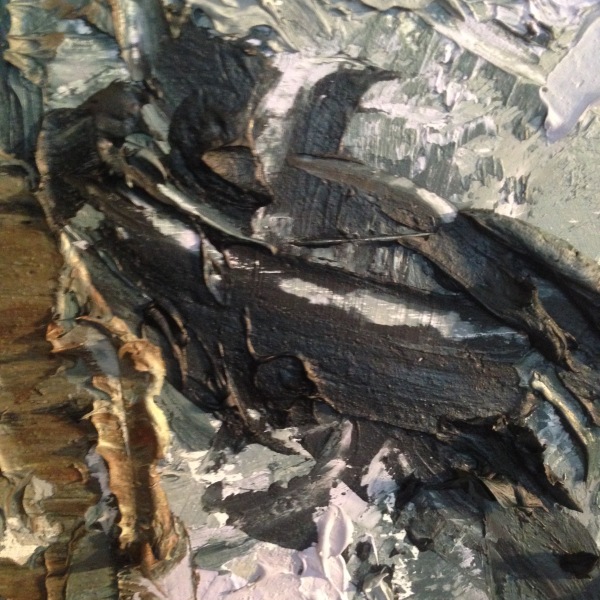
So – I did some research and here are my thoughts:
- FIRST: I am not a lawyer so this is my lay-informed opinion.
- SECOND: diverting business income by taking work and re-selling it is wrong. Classic example: downloading artwork and making it into t-shirts. < People have done that to me.
- Also, commercial use of a recognizable likeness of someone’s face – this is a theft of income. Every human has the right to be paid for the (commercial) use of their image. (Though, not in every legal jurisdiction. Personality Rights are not recognized in NYC for example).
- Same goes for commercial use of a building, a car, or even street-art if it ends up in a photo. (Designers and Architects have the same rights as any artist).
- So: no direct, mechanical copy FOR PROFIT. < This is common sense right?
BUT:
- NON-commercial use of anything (art, photos, likeness) is totally fine.
- Copies by students are an easy example, we can all agree that’s ok.
- Copied work appearing in your illustration or portrait artist’s portfolio is less obviously ok – but IS considered fair-use. It’s a true demonstration of your skill, not a commercial product. The commercial product is the future work you might gain, not the copy itself.
- AND >>>> most people don’t know this >>> one-of-a-kind original art is almost always ruled non-commercial.
- The Graphic Artist Guild of America says: “Generally, works of fine art are not considered commercial even if they sell for hundreds of thousands of dollars. Courts are more likely to consider artwork commercial if it is sold as mugs or t-shirts…”
- The key difference being, art is (generally) sold once, yes, the object may be re-sold a handful of times, but there is no mass (or mechanical) reproduction.
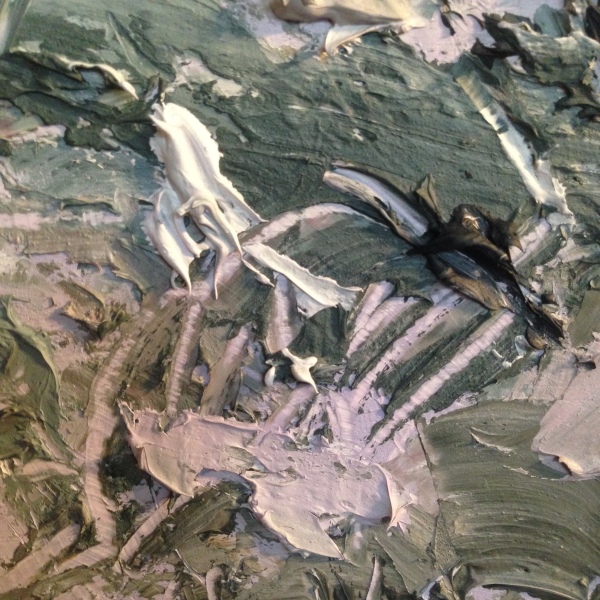
ALSO:
- Being inspired by an image, making (and selling) a TRANSFORMATIVE work is totally NOT copyright infringement.
- The existence of the new work does not in any way reduce the value of the old work.
- Often it actually increases value, by a kind of cachet effect. The original work must be great if it inspires so many copies.
- Examples of Transformative work:
- Translating to a different media: Photographs recreated in line-art or weaving or say – an impasto oil painting.
- Creating a composite image: Use multiple images for reference. To be safe, take no significant amount, or at least, equal amounts from each. (eg: collage).
- Altering the source image: Enough that it would not be recognized by a stranger – not by the original artist. (That’s the rule of thumb in court). This also covers portrait-likeness. If a stranger (not the model) would not recognize the individual, then you have not stolen their face – even if you admit to using their photo as reference.
- Doing all of these things combined is (imo) bulletproof. But any *one* of these transformations *might* be sufficient to be within Fair Use. (It’s up to the judge).
- Rules of thumb:
- Has the material taken from the original work been transformed by adding new expression (artistic interpretation) or meaning?
- Such as parody, or recontextualizing, or juxtaposition.
- Was value added to the original by creating new information, bringing new aesthetics, new insights, or understandings?
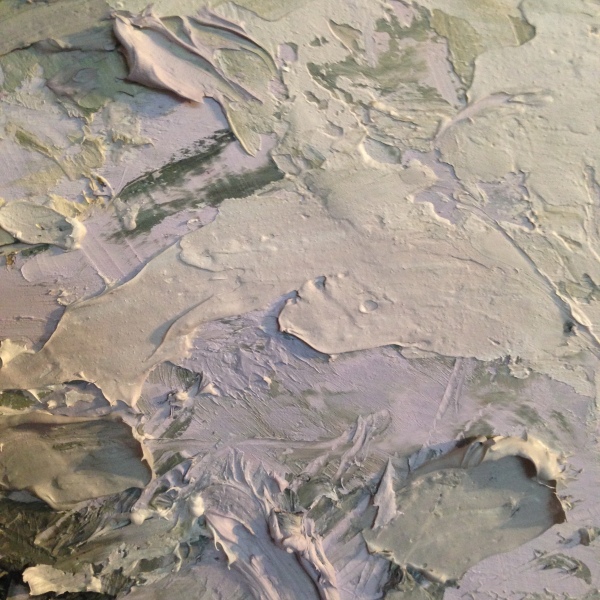
OK! Still with me?
That’s my rant about why it’s OK to think and act upon your actual creative thoughts no matter where the inspiration comes from.
Every thought we think comes from somewhere.
You see something, you read something, and you combine old ideas into new ideas. There’s nothing new under the sun.
Don’t be ashamed of seeing a great painting or photo and thinking – man – I would love do my own version of that!
All that said: you should still credit your sources.
[Photo: Trina Davies, Playwright of Waxworks, Shatter, Silence, The Bone Bridge and the GG-nominated The Romeo Initiative: http://www.trinadavies.com].
It’s just good grace between artists, and, if you are confident you’re doing transformative work, then there’s no reason not to.
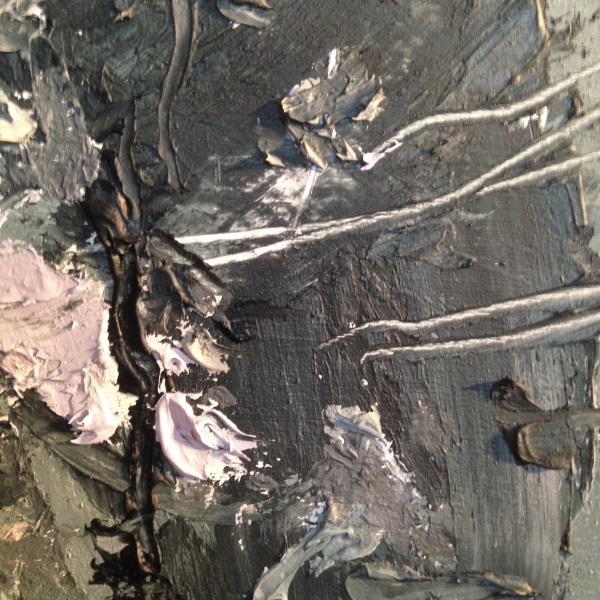
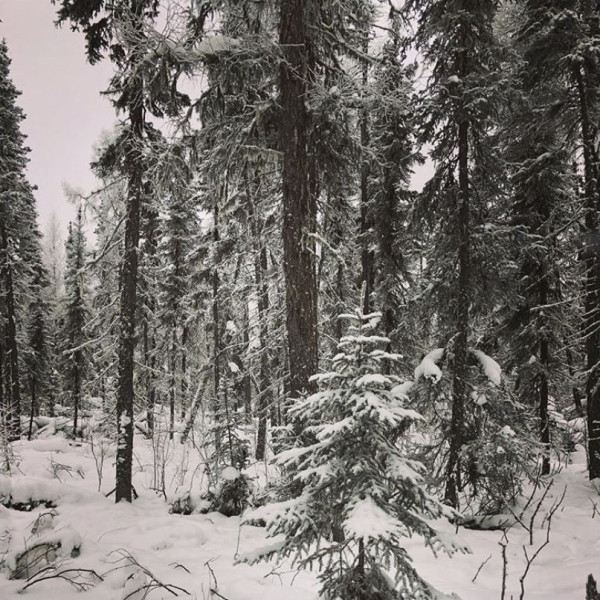
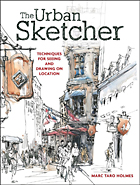
Thank you so much for providing your extensive description of the issues with copyright.
I was once very aggressively confronted by an artist who claimed I had inappropriately used a photo in her website (which had nothing to do with her paintings) when not only did I not know it was her personal photo (of a goat, by the way…), but I intended my little watercolor as an adaptation of the website photo, not for sale, for a local library art show.
Based on your explanation, I should have blown her off much more quickly than I did!
You hit a nerve with me here… And I agree with you, though some things may not be accurate about who has rights, but then, maybe it doesn’t matter. Couple things:
I once was nice enough to ask a not-well-known photographer if I could use his photo for reference of a architect’s building in So Cal; that I would publish it on my blog but not make any money off it anywhere (sketchbook). He said for $— dollars I could. I was actually pissed, because I asked him if he paid the architect (I knew him) for the right to photograph his building. Hmmmm…. noooo… So a former architect from California it pissed me off to think of the many photos that are taken by this turkey and he DOES make money and has no permission to do so… but it seems that architects don’t have that right in general unless they go for broke and copyright their buildings, much like the lighting designers did on the Eiffel Tower. Did you know you can be sued for publishing an image of the tower at night? Check it out. You are on your balcony, and baby toddler took his first step on that balcony, you snapped it withe the tower lit up behind, and BOOM.
Second, the lawyers have made people crazy. There are artists whom I enjoy following but I won’t bother anymore because they make their images teeny tiny or put some huge embossing across the image to the point where you can’t see it. Yes, they’ve been ripped off (as you have) but the truth is that by being put into fear aver being ripped off you lose peeps who follow you because you go into hiding or labeling.
I run a virtual sketching group, and while I am careful about what I post there for peeps to sketch, I am not careful about what I sketch from unless it is such an amazingly famous photo it is just too obvious. I look for Creative Commons or labeled for reuse. I also rarely bother to copyright my own things unless it is in some way special — then I don’t generally post it if it is going to go into a book.
When Sting got all over people making mixed tapes, Willie turned around and said he had more money than God and thought that people making mixed tapes spread his good music into new hands.
I also think there are few “new” ideas — notes, riffs, strokes, what have you. Maybe with a long book, but most of us don’t have things that are truly new, and we learn from copying each other — you do a stroke, I try that in a similar setting then keep making it my own.
I STRONGLY suggest you enjoy what I am offering below, a good friend’s take on all this — and she spoke at TED about it then they pulled copyright on her when she posted it on her own site, which was really really funny. So here are several good links.
https://www.gwennseemel.com/blog/2014/0522-tedx/
https://www.gwennseemel.com/blog/2016/0525-goliath/
https://www.gwennseemel.com/blog/2015/0917-ted-copyright/
and her book (which you can have for free or offer her $$) on copyright: https://www.gwennseemel.com/shop/books/you-share-good/
Copy on!
Ahhh…it’s a slippery slope indeed. The cynical me says everything’s been done before, and the practical me (a professional photographer for 40 years) says don’t you dare rip me off. Give credit where due – absolutely; but sometimes I find it difficult to pinpoint exactly where inspiration came from -maybe I’m just getting old and forgetful.
As a designer, what I’ve been told about copyright law is that if somebody changes your design 10% or more, then it is no longer an exact copy and therefore legal to sell. I’d be interested to know if this is true.
This offers a some protection for commercial designs. But art is far more personal than design, and the spirit of every artist shines through in their unique way. Your version of the lovely photo is an example. It’s a painting, and rendered entirely by hand. There are many small changes that have transformed it into your own vision.
I heard/read you have to change it 7 ways…I’d love to see this in watercolor.
Right you are! There’s a difference between an exact mechanical or digital reproduction vs another artist’s interpretation of the original work. Reproduction rights belong to the copyright holder and usually last 75 years after the artist’s death. There are exceptions such as a work made for hire, in which hopefully there is written agreement between the client and the artist.
I hope my note to you about keeping your reproduction rights didn’t anger you or trigger a need for your new post. :-) I’m in the art business and in the past have lectured on copyright law for visual artists. The 1976 US Copyright Law and the Digital Millennium Copyright Act were in their early, formative years when I was music director for a tv network. Believe me, laws for composers are far more complicated than they are for visual artists and designers.
Hylla Evans Evans Encaustics
Great article! I’m an attorney and I try to help people understand that most of what people think is copyright infringement isn’t at all!
The whole thing is a minefield. I sometimes take pictures of street art and post them to my blog, but I can’t always find out the name of the artist. I don’t make any money from my blog, but if I did would that infringe copyright?
Related to this, how does ownership of a work affect its copyright vis a vis the artist?
Re: the ownership of the work – That’s another complication! Normally, someone who purchases a painting, does not purchase the reproduction rights. Those are still held by the artist. Unless you’ve got a contract that has a written grant of rights, you only bought the object, not the right to sell reproductions of the object. This is a pretty common misunderstanding on both sides of an art purchase. Also with people who buy illustrations. They often only buy the rights for one publication, don’t realize it, and start using the illustration for posters or spin-off merchandise. Typically – they have to buy further rights to make those new products.
Good post, thanks! Btw, too rushed to comment usually, but I really enjoy your posts🌹
Thank you!! I’ve noticed a trend of people being fearful of trying to paint images they find, because of concern over copyright law! Your points really helped me !
Well I am a jewelry creator and I love this ‘summary’ of légalisé copyright infringement by none other than Marc Taro! Now I will hippityhop my way over to a lawyer.. nah just kidding but I do sense what we deem copyright is simply putting our name on our artwork since I can trademark that! Keep Painting Marc!! Bonne journée à vous.
Thanks! I am!
A good reference about copyright is https://www.templetons.com/brad/copymyths.html
Translating to a different media can be a violation of copyright . Artists have lost lawsuits when they copied photographs in a different medium (including copying black and white photos transformed into 3D coloured objects.
Artists have also won similar suits. You can pick examples from both sides. I’m not saying it’s a way to play safe. I’m not even saying I’d actualy sell work like this. I’m just saying these are the rules of thumb and you can decide if you want to do Transformative work or not. At the end of the day I just want the mental freedom to make the work I enjoy.
Excellent thoughts, thank you.
Then there is practicality. I was doing a sketch of Big Ben for someone, no charge but that is not the point here. So I went to Bing Images. There a thousands of photographs of Big Ben, and they all are essentially the same, variation in time of day or angle. Sketching from those is really not stealing an image as the photographer did not creat the image, an architect many years ago did. If ten people took a photo from the same bridge they would all be pretty much the same.
I recently took a workshop from an artist I very much respect. He used one of his painting to teach to and had all of us make our own version of the painting using his taught approach.
When I returned home from UK I finished the painting and was pleased with the result. My local school of art is having a student show. Can I submit it for a juried show.
See here’s the thing – look at the rules of thumb for Transformation and decide. Were you adding your own interpretation, were you re-contextualizing? or were you closely-imitating in the effort to learn. That’s the balance of Transformation as part of fair-use. IT’s a judgment call. NOw – if you just want to show your student work and perhpas not sell it, then of course go right ahead!
Thanks Marc, I have no intention of selling it, it is currently a bench mark piece that will hang in my studio.
Usually you can’t submit a painting that you did in a workshop to a jouried show anyway.
That’s true! And it can be quite annoying when you get caught out like that!
Thanks
When I go to my e-mails and find a Citizensketcher post, I just feel great. Thank you so very much, Marc, for taking the time to share your thoughts.
Weighing in from an illustrator’s pov, although I’m a fine artist these days…You can never go wrong using your own reference. Do you really want to be a test case for “fair use” by clearly and obviously appropriating someone else’s work? How would you feel when the shoe is on the other foot and you see your work being “adapted” and used without your permission or credit? Like that great sketch from your one and only trip to Paris showing up on RedBubble? Some of you might not care, but I suspect many of you would.
We covered copyright in the Business of Art class back in my illustration art school days (BFA Illustration, Academy of Art, ’89). As illustrators who would very often have to work from already printed reference because there might not be the time or budget to shoot our own for a job, we were already putting together our paper, “scrap” files, tearing out pages from magazines, etc., pre-Google. The rule of thumb we were taught was that if someone could recognize the source it was too close. So we learned how to make a piece our own by, for instance, always, always, always using multiple images, at least three. I’ve also attended a seminar with a copyright attorney who specializes in representing artists. He had some sad and sobering tales to tell. I know artists who have, in fact, sued for infringement and won.
Copy other art all you want to for learning and inspiration, something many if not most of us have done and it’s a longstanding traditional way to learn, but if it’s covered by copyright and not in the public domain, the minute you put it out in public and/or try to get a revenue stream from it, you’ve created a legal exposure for yourself since anyone can sue anyone. Is it worth the worry? See Fairey, Shepherd. Maybe his use of the Obama photo was fair use, maybe not. Maybe he altered it enough, maybe not. But he still had to deal with being sued. If he had asked the photographer for permission, promised source credit and maybe even offered a cut of the fee, he might have been turned down, but just as easily have been allowed to use it and been home free.
In the end, though, I think treating your fellow creators with respect is just good karma.
Just to touch one part of your well-thought response: “How would you feel when the shoe is on the other foot and you see your work being “adapted” and used without your permission or credit?”
– well : I did say it’s polite to give credit so I’d be annoyed that much,
– but otherwise, I can’t really want the freedom to Transform in my own work and not allow someone else the same right can I? So I’d feel happy and excited that other people are expressing their thoughts even somewhat related to my work! It’s good for all fine artists when Fair Use is interpreted generously. I’m not giving permission for COMMERCIAL use, as you know from the article, (No T-shirts with my paintings please) but I support anyone making and selling non-commercially.
Make sense?
Thanks Fox!
Hello Marc,
I read somewhere that you can even make a reproduction of an art work with the same medium as the original, like the copist in museums around the world, BUT the size MUST NOT be the same.
Thanks for posting this. I spoke about this to my students today.
Jérôme
Love your work Marc, but there is so much wrong with your interpretation of copyright infringement and fair use that I do not know where to begin, so instead of getting to a tit for tat online argument that always ends up circular.
I say every artist should do their own research.
I do want to point out the pit falls of copying work and selling it.
Plagiarism is the presentation of someones else’s work as your own. When someone buys art they assume it is original, ..it being of the artists concept and their authentic work. When you copy others work or copy photos off line and call it original art it is misrepresentation, when you copy an artists original work and claim it as your own it is both thief and plagiarism. Selling that work is both misrepresentation and fraud. Copy all the stuff you want for yourself, and state it after the artist.
Well Joey, I’m not following you, and I’m pretty comfortable with my own research and opinion. I agree there’s no point in getting into an online argument. We don’t seem to agree, but this is my blog, so I’ll take the last word: I’m talking about the definition of Transformative Work, and when that surpasses a copy. If you can’t see that’s the point of the post, then we aren’t communicating. Sorry, but – maybe have a closer read?
Well said, Marc.
As to Joey’s comment, plagiarism is the word for word taking of something someone else wrote. Maybe it’s just me, but I’ve never seen anyone equate plagiarism to art, just to written material. As for copyrights in print, you cannot copyright an idea, a title, a short phrase, someone’s name. As for the idea, you can only copyright how you wrote the idea, explained it, etc. But you cannot copyright the idea itself. I’m an author for some 20 books and I’ve had my ideas ripped off but still not infringement because they didn’t steal my word for word phrasing.
As for art, the same or similar concept would hold true. If you make an exact, duplicate copy of someone’s work and try to sell it as your own original work with an attempt to deceive the public, that would probably be an infringement of their copyright. Copyright exists the moment something is written or painted or created. But just as in the written word, creating one’s own individual impression of the original image (whether real or in a photo) or creating something substantially different would not be an infringement. I think there has to be a substantial amount of recognizable difference as painting is more subtle than words in a paragraph. Mass duplication is a whole other matter.
Joey, at no time are people’s “assumptions” part of any equation or the law in determining anything. That is actually a silly argument and an assumption on Joey’s part. The matter can only be disputed by the real original artist or photographer or builder (et al) or someone legally authorized on his or her behalf (like an agent) to issue a challenge.
What makes all this somewhat ridiculous, however, is that God is the ONLY original creator. God is the only truly original designer, architect, artist. We ALL are making copies, however good or not, of HIS original creations. So HE gives us all free, unfettered access to His creations and blesses us with talents to do our best to capture what HE created and make it into something with our soul and spirit attached. He isn’t interested in suing us; we should try to react as He does as much as is possible.
I’ve had one of my images illegally reproduced on t-shirts. Maddening, I know, but I let it go. Pick your battles over truly important things. Money can be replaced. It’s not a truly important thing in the scheme of life.
That’s my take.
Lastly Marc, I’ve switched to acrylics, which is why I haven’t been around of late. But I still enjoy seeing everything you paint. Keep it up. Sorry about you losing your publisher, but you’ll be ok on your own. Thankfully authors can self publish easily these days and get it on Amazon. Best wishes from California.
Nice forest trees Marc.
Maybe that’s why Urban Sketching is so popular (apart from exploring our environment) …if we’re creating art on location then no one can sue you ? …Although people can still pass (unrequested) judgement on your art…to which I reply “this is my interpretation of reality…it may look different if you paint it….”
thanks for sharing! amazing! if you have a chance I would really appreciate if you could check out my music and art blog itd mean a lot!
https://thehighsnlows.com